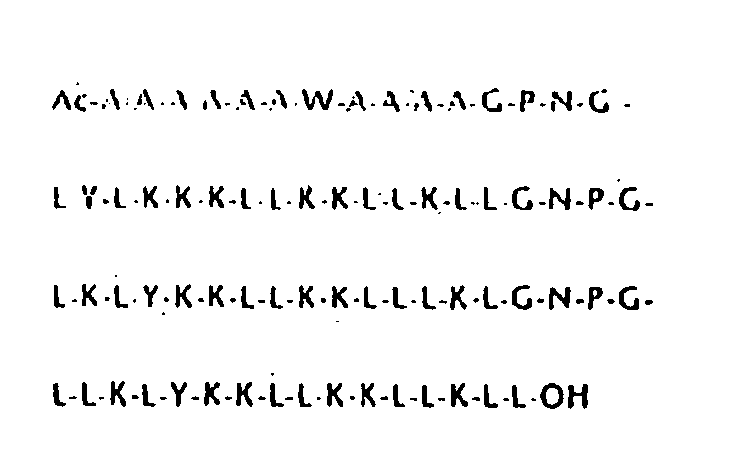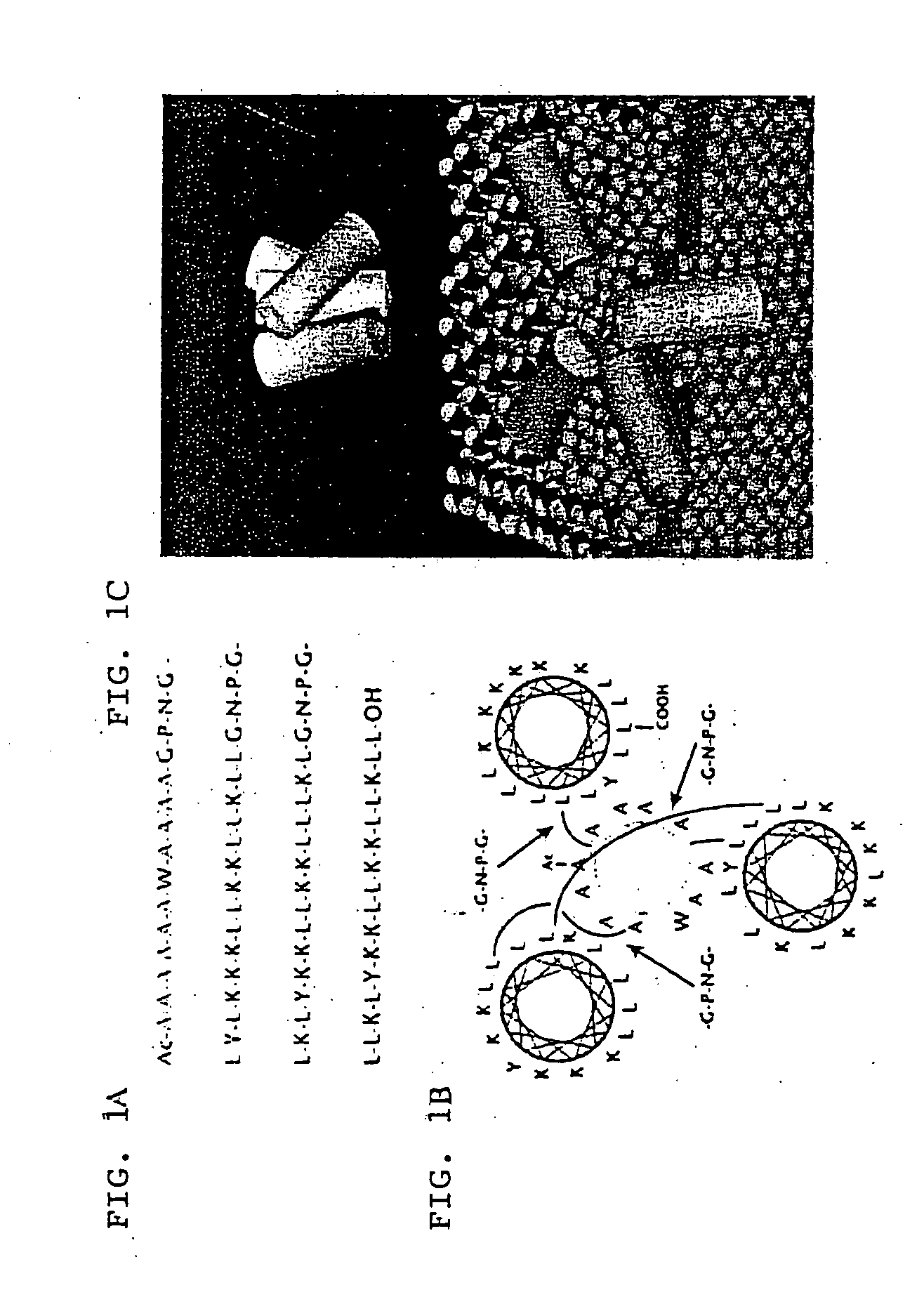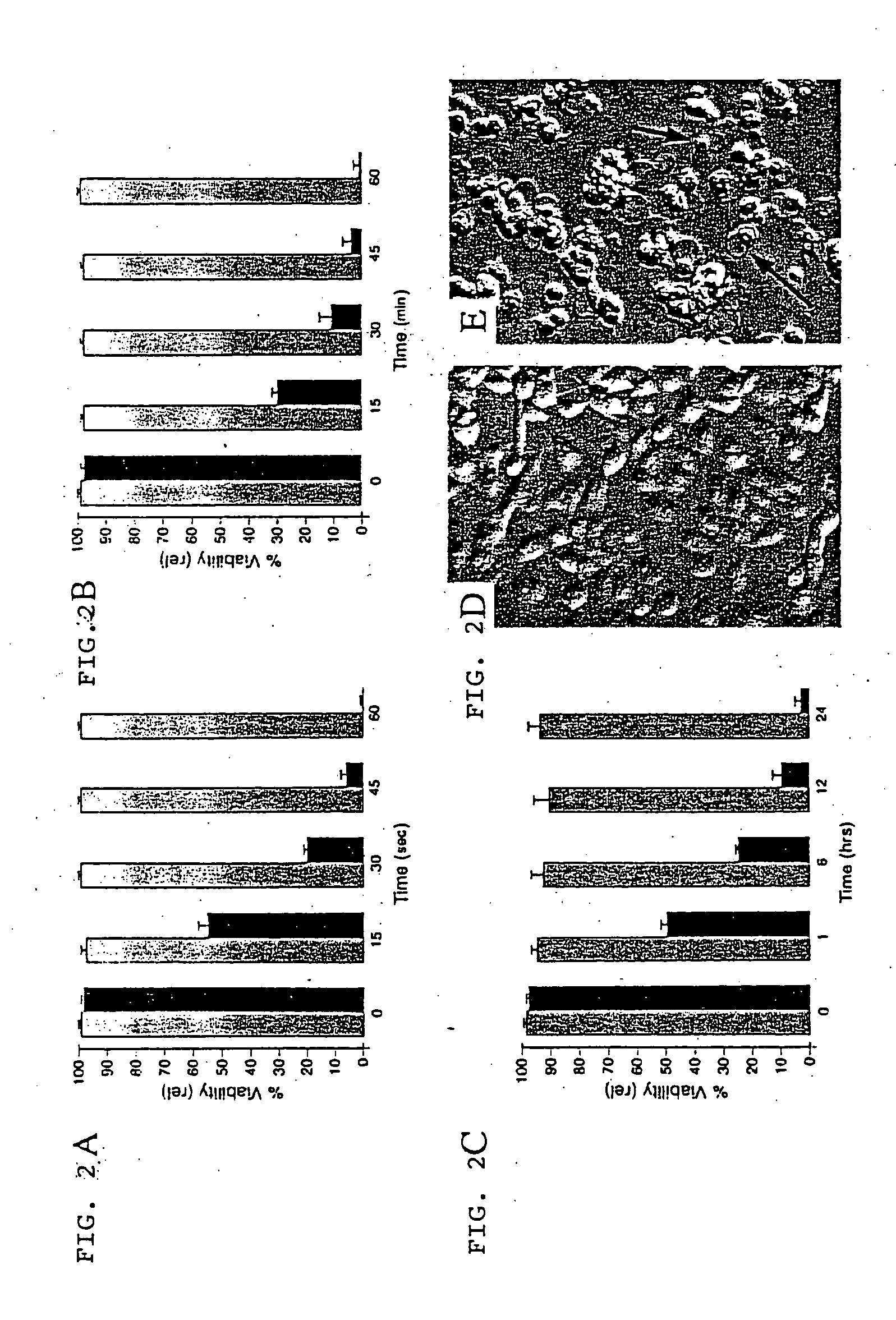Artificially designed pore-forming proteins with anti-tumor effects
a pore-forming protein and artificial design technology, applied in the direction of peptide/protein ingredients, drug compositions, antineoplastic agents, etc., can solve the problems of limited anti-tumor effects in vivo, observed therapeutically significant cell membrane disruption activity, cell lysis, etc., to achieve limited anti-tumor effects, limited efficacy in vivo, and moderate killing
- Summary
- Abstract
- Description
- Claims
- Application Information
AI Technical Summary
Benefits of technology
Problems solved by technology
Method used
Image
Examples
example 1
Reagents
[0093] SGP, SGP-L, and SGP-E were synthesized according to the Fmoc procedure starting from Fmoc-Leu-PEG (polyethylene glycol) resin using a Miligen automatic peptide synthesizer (Model 9050) to monitor the de-protection of the Fmoc group by UV absorbance (see Lee, et al. (1997) Biochem. 36, 3782-3791). After cleavage from the resin by trifluoroacetic acid, the crude peptide obtained was purified by HPLC chromatography with an ODS column, 20×250 mm, with a gradient system of water / acetonitrile containing 0.1% trifluoroacetic acid. Amino acid analysis was performed after hydrolysis in 5.7 M HCl in a sealed tube at 110° C. for 24 h. Analytical data obtained were as follows: Gly, 6.2 (6); Ala, 9.5 (10); Leu, 26.5 (25); Asp, 3.0 (3); Pro, 2.9 (3); Tyr, 3.1 (3); Lys, 18.9 (18). Molecular weight was determined by fast atom bombardment mass spectroscopy using a JEOL JMX-HX100: base peak, 7555.1; calculated for C, 367; H, 639; O, 77; N, 91.H+, 7554.8. Peptide concentrations were de...
example 2
Computer Model
[0094] The computer-generated model of SGP was made with the program Insight II (Molecular Simulations Inc., San Diego, Calif.) running on an Octane SSE work station (Silicon Graphics, Cupertino, Calif.).
example 3
Cell Culture
[0095] All cell lines were obtained commercially. The Kaposi's sarcoma-derived cell line KS1767 and the breast carcinoma cell line MDA-MB-435 have been described previously (see, for example, Herndier, et al. (1994) Aids 8, 575-581; Reisbach, et al. (1982) Anticancer Res. 2, 257-260; and Ellerby, et al. (1999) Nat. Med. 5, 1032-1038) and were cultured in 10% fetal bovine serum / Dulbecco's modified Eagle's medium, containing antibiotics.
PUM
| Property | Measurement | Unit |
|---|---|---|
| volumes | aaaaa | aaaaa |
| volume | aaaaa | aaaaa |
| volumes | aaaaa | aaaaa |
Abstract
Description
Claims
Application Information
 Login to View More
Login to View More - R&D
- Intellectual Property
- Life Sciences
- Materials
- Tech Scout
- Unparalleled Data Quality
- Higher Quality Content
- 60% Fewer Hallucinations
Browse by: Latest US Patents, China's latest patents, Technical Efficacy Thesaurus, Application Domain, Technology Topic, Popular Technical Reports.
© 2025 PatSnap. All rights reserved.Legal|Privacy policy|Modern Slavery Act Transparency Statement|Sitemap|About US| Contact US: help@patsnap.com



